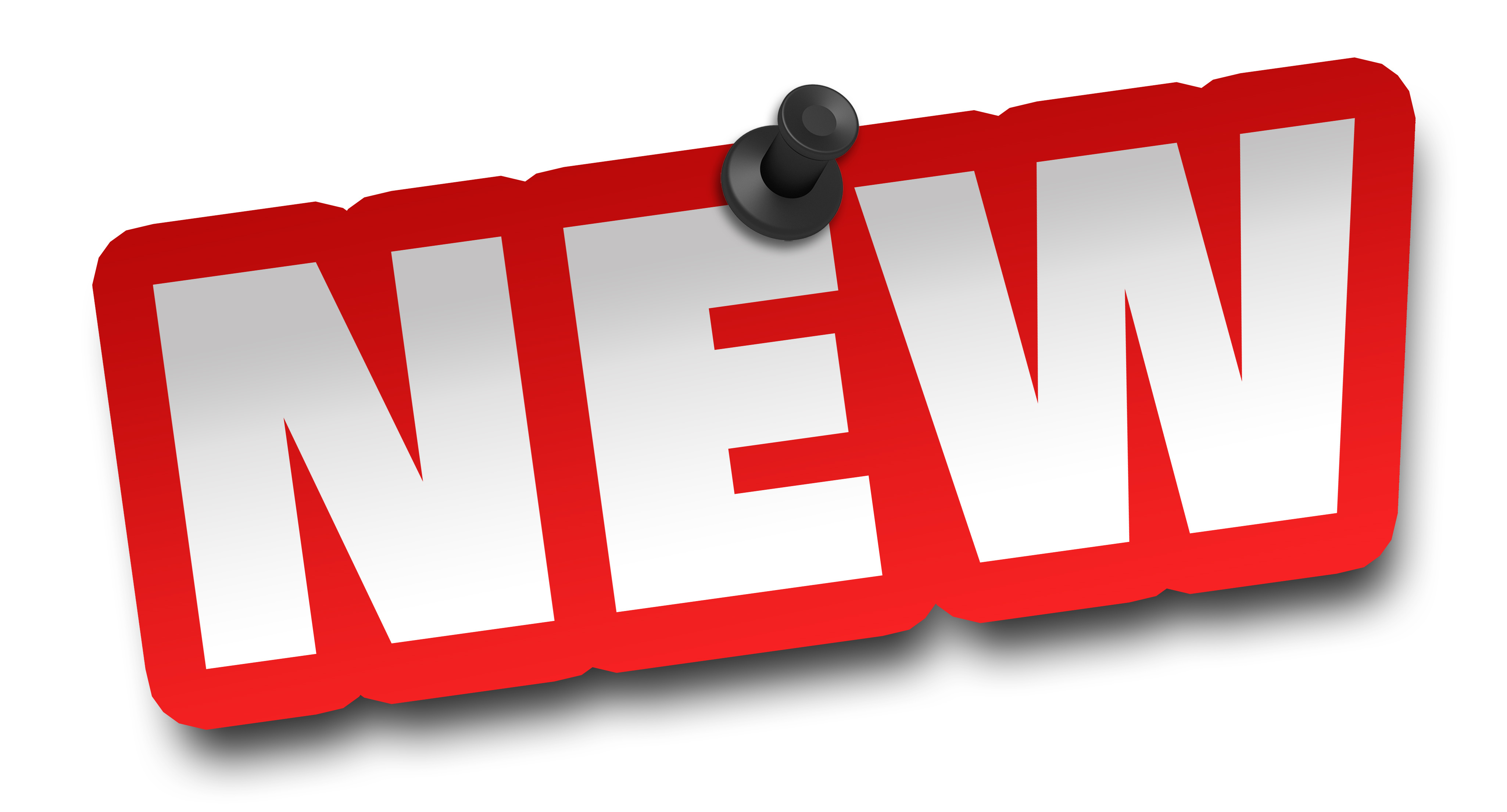Have you ever noticed how things just keep getting updated? It feels like hardly a moment passes before something you use daily gets a fresh look or a different way of working. This constant movement, this arrival of a "new new edition," shapes how we interact with our digital tools, our data, and even our work processes. It is a pretty common experience, especially now.
From the way your web browser opens a fresh tab to how developers manage their code, these frequent updates are a big part of our current digital life. They can bring welcome improvements, or they might make us pause and figure out a slightly different path. So, in some respects, understanding these shifts helps us stay on top of things.
This article looks at what these continuous updates, this very "new new edition" idea, actually mean for you. We will explore how these changes pop up in different areas, what you might gain, and what you might need to consider. It is all about staying comfortable with things that keep moving, you know.
Table of Contents
- Understanding the New New Edition
- How New Editions Show Up in Your Daily Digital Life
- What to Consider When a New Edition Arrives
- Frequently Asked Questions About New New Editions
- Moving Forward with the Latest Changes
Understanding the New New Edition
The term "new new edition" might sound a bit playful, but it points to a very real trend. It is about the constant cycle of improvements, fixes, and fresh starts that software, systems, and even hardware go through. Think about it: hardly a week goes by without an alert for an update on your phone or computer. So, this isn't just a one-time thing; it is an ongoing process.
This concept covers everything from a tiny tweak in a browser's behavior to a complete overhaul of a programming framework. It is the idea that what was "new" yesterday might already be getting replaced by something "newer" today. Pretty much, it keeps us on our toes.
This continuous stream of changes is driven by many things. Developers want to make things run better, fix problems, or add capabilities people ask for. Businesses want to stay competitive and offer the latest tools. Users, in a way, often expect things to get better over time, too. It is a dynamic process, you know.
How New Editions Show Up in Your Daily Digital Life
The arrival of a "new new edition" shows itself in many parts of our digital routines. It affects how we browse the internet, how developers build things, and how organizations handle their information. Each area presents its own set of changes and things to learn, sort of.
Browser Behaviors and User Interface Shifts
Consider your internet browser, for example. When you open a new tab in Microsoft Edge, perhaps using the keyboard shortcut Ctrl+T or by clicking the '+' button, the page loaded might change slightly. This might be a new default start page, or perhaps a different layout for suggested content. These are small but noticeable "new new edition" moments for everyday users, obviously.
These browser updates often aim to make things quicker or add handy features. They might change where buttons sit, or how menus appear. Sometimes, they introduce new ways to organize your tabs or manage your browsing history. It is about making the experience a little smoother, you know.
For most people, these changes are pretty subtle. They might take a moment to get used to, but they generally improve things over time. It is a good example of how small "new new edition" elements influence our daily interaction with technology, essentially.
Managing Code and Development Updates
For those who build software, the "new new edition" appears in how code is managed and how systems are put together. When a new branch, let's call it 'b', comes off the main 'master' branch in a version control system like Git, it carries both the committed and untracked changes from an earlier branch, 'a'. This reflects a fresh way of organizing development work, in a way.
The way you might add a new key to an existing dictionary in a programming language could also change. Some older methods might not have an '.add()' function anymore, requiring a different approach. This shows how core programming tools get "new new edition" updates that change common tasks, sort of.
The structure of modern application frameworks also reflects this. For instance, the new ASP.NET Core and EF Core are built to be very independent, not relying on specific configuration systems. Instead, you just pass a DbContextOptions. This is a big "new new edition" approach to how software components interact, you know.
Pushing a local branch to a remote repository, or publishing it, also involves considerations for tracking. This ensures that Git understands the connection between your local work and the shared version. It is about adapting to the "new new edition" of collaborative development practices, really.
Data Systems and Information Handling
Data management also sees its share of "new new edition" moments. Imagine building a PowerBI dashboard with data from a Datalake Gen2. Then, you try to add a new column to your original data source. The question becomes, how do you refresh that dashboard from the PowerBI side without a lot of trouble? This is a common challenge when data sources evolve, you know.
Creating a new Pandas dataframe from specific columns of an existing one is another example of adapting to data structures. While this particular task has been around for a while, the methods and best practices for doing it efficiently can get updated. It shows how even common data tasks get refinements, sort of.
The way anonymous objects are handled in some programming languages also points to "new new edition" distinctions. If you declare 'var a = new { }' versus 'var o = new object()', there is a difference. The first can only be assigned to a similar anonymous object, while the second is more general. This is a subtle but important change in how data types behave, obviously.
Adding a new remote path to a repository, or editing an existing one, also reflects evolving data access. You click an 'edit' button and go to a details window. This streamlined process for managing remote connections is a "new new edition" improvement for data access, you know.
What to Consider When a New Edition Arrives
When a "new new edition" appears, whether it is for your browser, your development tools, or your data systems, there are a few things worth thinking about. It is not always about jumping right in; sometimes, a bit of thought helps, pretty much.
Compatibility and Your Current Setup
One of the first things to consider is how the "new new edition" will work with what you already have. For example, some newer components might fit with older systems, while others might not. This is a common question, you know.
Think about motorcycle parts. Newer XT models might take larger rotors and caliper adapters. But an older 49L model might not have those upgrade paths, besides new sintered pads, stainless steel lines, and good fluid. Before spending money on improvements, you need to know what fits. This is a very real-world example of compatibility with a "new new edition" part, you know.
Even a brand new EBC clutch plate and springs, once installed, might start slipping after the bike is run hard for a few hours. This means the "new new edition" part might not perform as expected with the rest of the existing setup. It shows that sometimes, even new components need careful consideration for their surroundings, basically.
Learning and Adapting to New Ways
With every "new new edition," there is often a fresh way of doing things. This might mean learning new keyboard shortcuts, or understanding a different menu layout. It is a part of keeping up with the changes, you know.
If a method for adding a key to a dictionary changes, you need to learn the new syntax. This is a simple but clear example of adapting to a "new new edition" in programming. It requires a little bit of study, you know.
Forums for MX, offroad, and dual sport motorcycles, ATVs, and UTVs are a great place to learn about new parts and maintenance. People share experiences about what works and what does not. This kind of community helps users adapt to the "new new edition" of equipment and practices, actually.
Deciding on Upgrades and Changes
The arrival of a "new new edition" often presents a choice: do you adopt it, or do you stick with what you have? This decision often comes down to weighing the benefits against the effort involved. It is a practical matter, you know.
Sometimes, the improvements are clear and worth the effort. Other times, the changes might be minor, and the current setup works just fine. It is about finding that balance for your own situation, obviously.
For instance, if a "new new edition" of software offers significant performance gains or crucial security updates, it is often a good idea to move forward. But if it is just a cosmetic change that might disrupt your workflow, you might wait. It is a personal choice, basically.
Frequently Asked Questions About New New Editions
How do I know if a "new new edition" will break my existing setup?
Checking compatibility notes or release information is a good first step, you know. Developers usually provide details on what might change or what might not work with older versions. Testing in a separate environment before applying updates widely is also a smart move, basically.
What are the benefits of always adopting the "new new edition"?
Often, the latest versions come with security fixes, performance improvements, and new features that can make your work easier or safer. Staying current can also mean better support from the creators if you run into problems. It keeps things running smoothly, you know.
Where can I find reliable information about a "new new edition" before I update?
Official documentation from the software or hardware maker is always the best source. Community forums, like those for specific software or vehicle types, also offer real-world experiences and advice from other users. You can also check reputable tech news sites for reviews and guides, as a matter of fact. For instance, you might find useful insights on a site like The Verge.
Moving Forward with the Latest Changes
The continuous flow of "new new edition" releases is just a part of our current digital landscape, as of today, October 26, 2023. It means we are always learning a little, always adapting. This constant movement can feel like a lot sometimes, but it also brings fresh possibilities and ways of doing things, you know.
Being open to these changes, while also being thoughtful about them, is a good approach. It is about understanding that things evolve, and finding the best way for you to evolve with them. Pretty much, it keeps things interesting.
Whether it is a minor browser tweak or a major system overhaul, each "new new edition" offers a chance to refine your tools and processes. So, consider exploring what these updates mean for your daily activities. Learn more about new features on our site, and link to this page See our latest updates here.



Detail Author:
- Name : Georgianna Nienow
- Username : gayle.vonrueden
- Email : leuschke.michaela@spinka.biz
- Birthdate : 1986-06-23
- Address : 651 Kristy Plaza East Isabellfurt, NH 49635-9597
- Phone : (559) 577-1181
- Company : Anderson, Stamm and Nader
- Job : Computer Programmer
- Bio : Repudiandae harum eos porro quos consequuntur. Nobis exercitationem ut magnam enim eligendi. Totam adipisci consequatur nemo dolor. Culpa est natus excepturi.
Socials
instagram:
- url : https://instagram.com/dejahpollich
- username : dejahpollich
- bio : Qui hic qui illum quo enim delectus. Ut omnis sunt numquam voluptatem.
- followers : 4549
- following : 1568
twitter:
- url : https://twitter.com/dejah_dev
- username : dejah_dev
- bio : Et fugit eos rerum. Distinctio quod qui cumque molestiae. Natus quasi ullam qui culpa sit aperiam magni.
- followers : 5236
- following : 1131
tiktok:
- url : https://tiktok.com/@dejah_pollich
- username : dejah_pollich
- bio : Impedit et fuga et. Rerum modi tenetur ut temporibus.
- followers : 6987
- following : 2954
linkedin:
- url : https://linkedin.com/in/dejah.pollich
- username : dejah.pollich
- bio : Fuga praesentium doloribus quam qui.
- followers : 6793
- following : 576



























